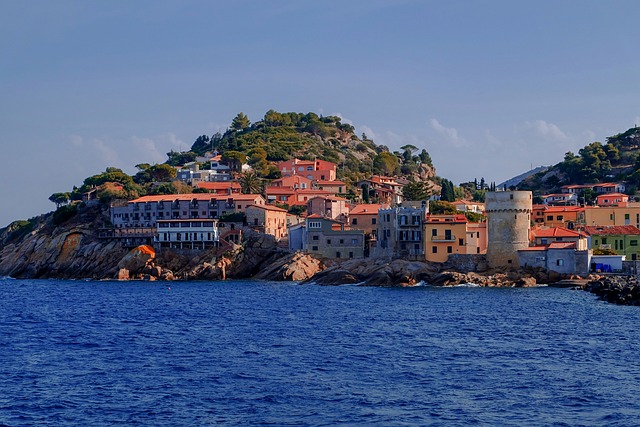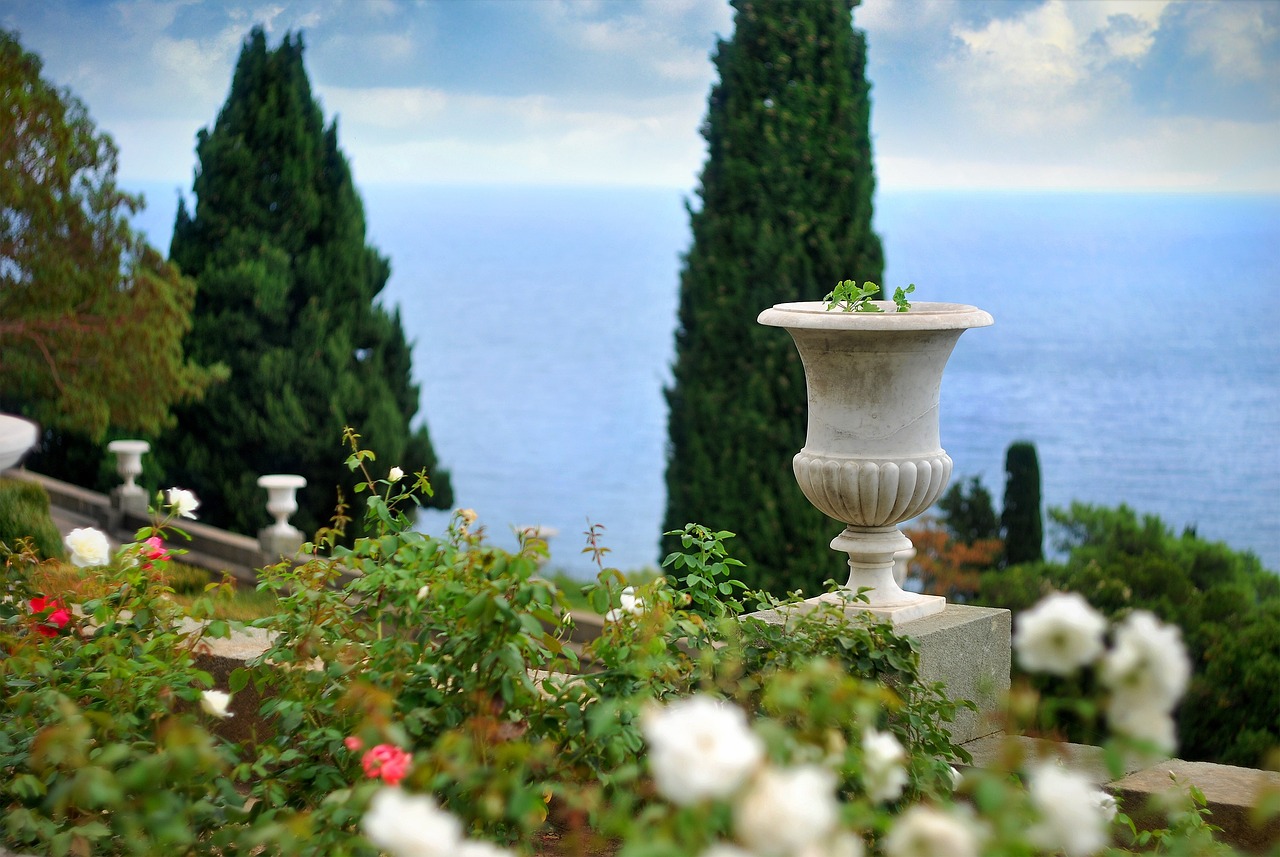Mediterranean gardens are very popular as they remind people of relaxing holidays in the sunny landscapes of southern Europe.
With aromatic herbs, bright flowers, and rustic charm, this style of garden gives you the vibes of Greece, Italy, and Spain.
In this comprehensive guide, we will look at easy to achieve Mediterranean garden design ideas, and how to implement them into your own garden.
Mediterranean garden design ideas include terracotta planters, herbs and statement trees like olive, lemon and cypress. Mosaic tiles and rustic stonework compliment fountains and bougainvillea climbers.
Key Elements Of Mediterranean Gardens
Let’s have a look at the key elements that define this style, we will then discuss these in detail later in the article.
Colour Scheme
The colour scheme typically consists of warm, earthy tones like terracotta, deep greens, and varying shades of blue and purple.
- Earthy Tones: Use gravel, sandstone, terracotta pots, urns, and tiles to add earthy reds and oranges to your garden. Terracotta containers are not only pretty but also perfect for planting various Mediterranean plants. The clay can draw away excess moisture from the soil, which helps prevent waterlogging more than a plastic pot would.
- Vibrant Blues and Purples: Incorporate shades of blue, from cobalt to turquoise, through tiles, mosaics, decorative pottery, and even a blue-painted accent wall. Blue is reminiscent of the Mediterranean Sea and sky, and it adds a refreshing touch to the garden. Many Mediterranean plants will have shades of blue and purple flowers.
- Warm Greens: Mediterranean gardens are filled with lush greenery, from trees to fragrant herbs. Use different shades of green to create a harmonious backdrop for your garden’s other colours. Lavender and olive trees provide soft pastel greens while Cyprus trees and laurels add a dark rich green.
- Splash of Red and Yellow: Plant vibrant flowers like geraniums, bougainvillea, and marigolds to introduce splashes of red and yellow, infusing energy and warmth into your garden.
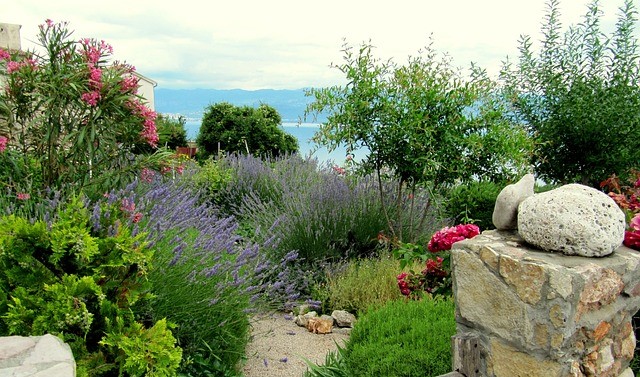
Plant Types
- Mediterranean gardens feature a diverse array of drought-tolerant plants that thrive in the region’s warm and arid climate.
- These plants are often selected for their ability to withstand hot, dry summers and mild, rainy winters.
- Succulents are common sights in the hot climates of Greece and southern Spain, and are visually striking additions.
- Aromatic herbs like rosemary, lavender, thyme, and sage are prominent in Mediterranean gardens, infusing the air with delightful scents.
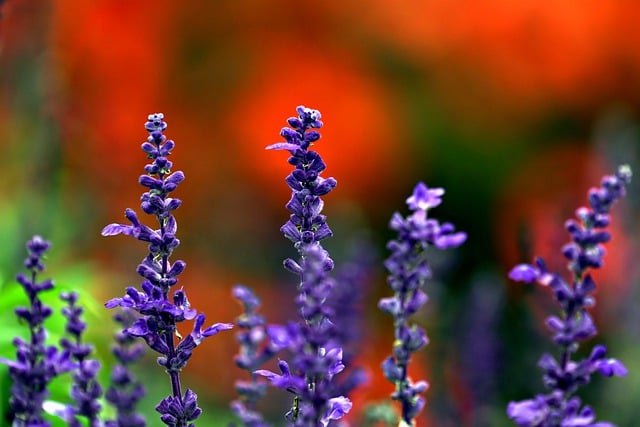
Stonework and Terracotta
- Hardscape elements such as stone pathways, terracotta pots, and rustic stone walls are common features, adding a timeless charm to the garden.
- Install colourful mosaic tiles on tabletops, planters, or as decorative accents.
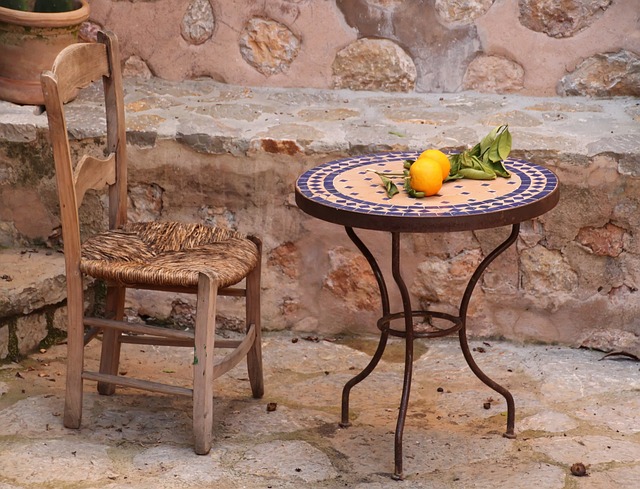
Mediterranean Trees
- Olive trees, citrus trees, and cypress trees are iconic choices, providing shade and vertical interest.
Water Features
- Mediterranean gardens often include simple water features like fountains or small, reflective pools, contributing to a sense of tranquility.
Terracing and Levels
- To combat hilly terrain and maximise space, Mediterranean gardens frequently incorporate terracing and multiple levels.
Mediterranean Garden Design – A Step By Step Guide
Step 1: Site Assessment
Begin by assessing your garden site to understand its unique characteristics and limitations:
Climate
- Determine your climate zone and understand the temperature and rainfall patterns in your area.
- Mediterranean gardens are designed to thrive in regions with hot, dry summers and mild, rainy winters.
Sunlight
- Analyze the amount and intensity of sunlight your garden receives throughout the day.
- Most Mediterranean plants prefer full sun.
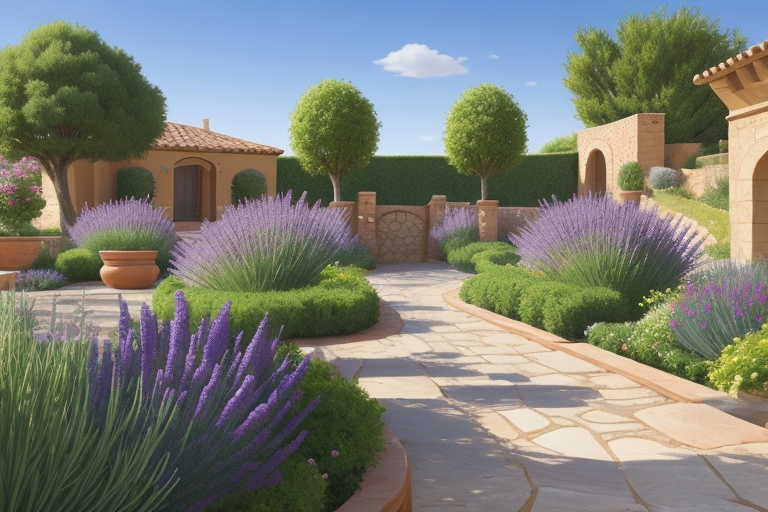
Soil Quality
- Assess your soil’s composition and drainage.
- Mediterranean plants often require well-draining soil with good aeration.
Space
- Consider the size and layout of your garden, whether it’s a small courtyard, a large backyard, or something in between.
Budget
- Establish a budget for your project, as Mediterranean gardens can vary in complexity and cost.
- Keep an eye on local Buy Swap and Sell sites as often you can find great deals on stoneware and garden accessories.
Step 2: Garden Design and Layout
With a clear understanding of your site, it’s time to plan the design and layout of your Mediterranean garden:
Choose A Theme And Make A Plan
- Decide on a specific Mediterranean theme for your garden.
- You can opt for a traditional Italian, Spanish, or Greek design, or blend elements from various regions.
- It is good to make a plan, even just a simple drawing, so you can have a clear idea of what will go where and how best to arrange all the elements.
Create Focal Points
- Identify central focal points, such as a fountain or pergola to anchor your garden design.
- This could also be a seating area, or perhaps a statement tree.
Planting Zones
- Designate areas for planting, considering the height and growth habits of each plant.
- Use terracing or raised beds to create multiple levels if needed.
- Create a herb garden, or a herb spiral to make the most of available sunlight.
- Utilise walls, pergolas or trellises to create colour and foliage vertically.
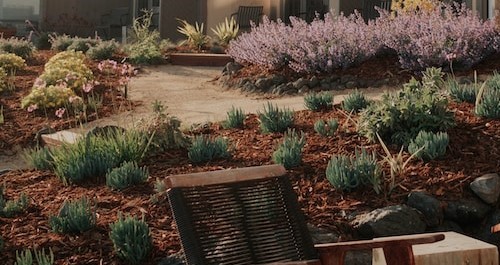
Hardscape Elements
- Incorporate natural materials like stone, terracotta, and wood in pathways, walls, and garden structures to enhance the Mediterranean aesthetic.
- The rustic and weathered appearance of hardscape elements is a hallmark of Mediterranean garden design.
- Create meandering stone pathways that lead visitors through your garden. Irregularly shaped stones with moss or creeping thyme growing between them add to the timeless charm.
- Lay terracotta tiles for patios, seating areas, or garden borders. These tiles not only provide an authentic Mediterranean look but also help keep the ground cool.
- Use stone walls or arbors covered with climbing vines like bougainvillea or wisteria to add structure and privacy to your garden. Sandstone is lovely yellow colour and perfect for the Mediterranean vibe.
Water Features
- Water features are a common element in Mediterranean gardens, providing a soothing and refreshing ambience.
- Have a simple stone or terracotta fountain as a focal point in your garden. The sound of trickling water adds to the garden’s tranquil atmosphere.
- Install a small reflecting pool or ornamental basin with aquatic plants and colorful tiles for a serene and visually appealing feature.
- Large terracotta water jars or amphorae filled with water and aquatic plants can serve as decorative elements while also attracting wildlife.
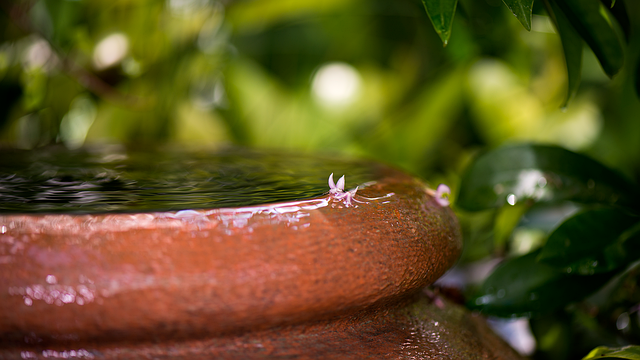
Seating and Entertainment
- Plan seating areas where you can relax and enjoy your Mediterranean garden.
- Opt for rustic wooden or wrought-iron furniture with simple and sturdy designs.
- Add colourful cushions for comfort and a pop of colour.
- Install a pergola covered with climbing plants like grapevines or roses.
- Hang outdoor curtains or drapes for added privacy and shade.
- Place mosaic-tiled benches or seating areas with colourful patterns and comfortable cushions.
- If space allows, design a central courtyard with walls or greenery for privacy, surrounded by inviting seating areas.
- Hang hammocks or swings from sturdy tree branches or pergolas to create cozy spots for lounging.
Lighting
- Install outdoor lighting to extend the enjoyment of your Mediterranean garden into the evening hours.
- Soft, warm lighting can create a romantic atmosphere.
- Attach wall sconces to garden walls or outdoor structures for soft, focused lighting.
- Candles and fire pits can provide ambient light.
- If you are considering buying a fire pit, take a look at our review of the best fire pits available to buy on Etsy this year.
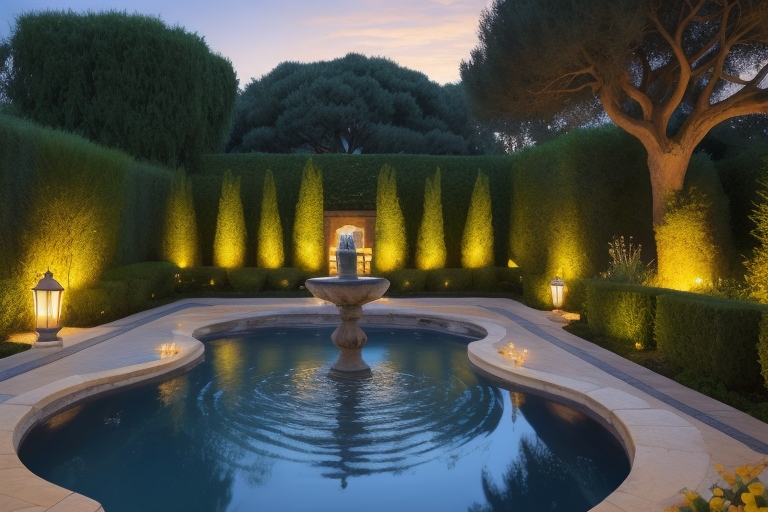
Accessories
- Decorative terracotta pottery, such as amphorae or statues, adds an authentic Mediterranean touch.
- Wrought-iron gates, trellises, or wall art featuring intricate designs can complement the garden’s rustic charm.
- Hang outdoor mirrors to create the illusion of more space and reflect the garden’s beauty.
Step 3: Plant Selection and Care
The selection of the right plants is fundamental to achieving the Mediterranean look and feel.
Mediterranean Trees
- Choose iconic trees such as olive and cypress trees to provide shade, texture, and a sense of Mediterranean authenticity.
- Citrus trees such as lemon, lime, and orange not only provide fruit but also serve as ornamental additions to your garden.
- Laurel trees and bushes are a fabulous option for the Mediterranean garden, as their glossy evergreen leaves provide excellent boundary hedges.
- Another classic Mediterranean tree is the fig tree, which in milder areas of the UK will grow well in pots, although you may need to bring it inside or into a greenhouse over the winter.
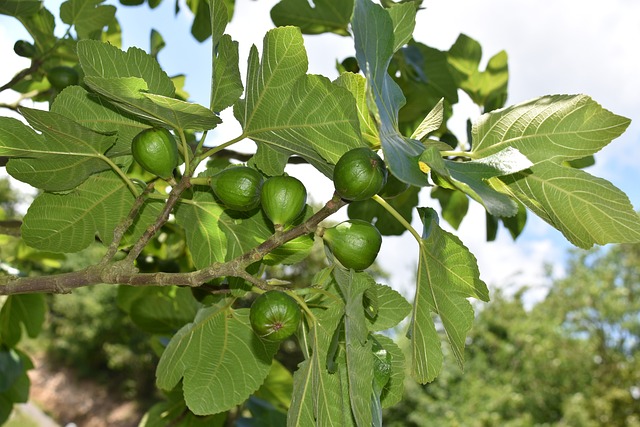
Aromatic Herbs
- Plant fragrant herbs like rosemary, lavender, thyme, and oregano in well-drained soil to release their delightful scents when brushed against.
- The purple and blue flowers of these plants are perfect for the Mediterranean style, as well as attracting bees and other pollinators.
Shrubs and Perennials
- Include drought-tolerant shrubs and perennials like agapanthus, oleander, and salvia to add colour and texture.
- Heathers in varying shades of purple are perfect for softening the edges of your hardscaping elements.
- Verbena bonariensis is great for sunny borders, providing height and colour.
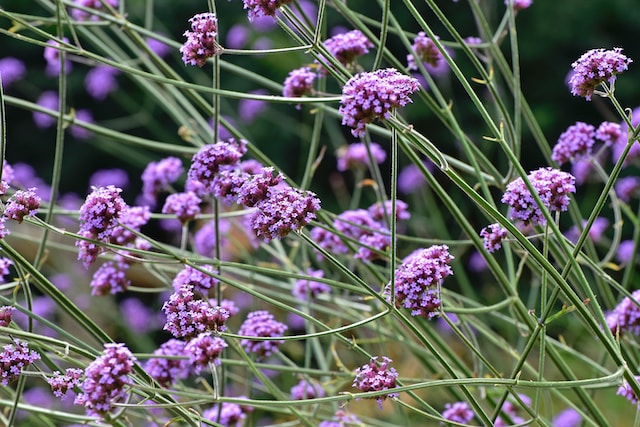
Succulents
- Succulents like agave, yucca and aloe vera will add that southern Mediterranean feel.
- If your climate is cooler these can be grown in pots and brought in for the winter.
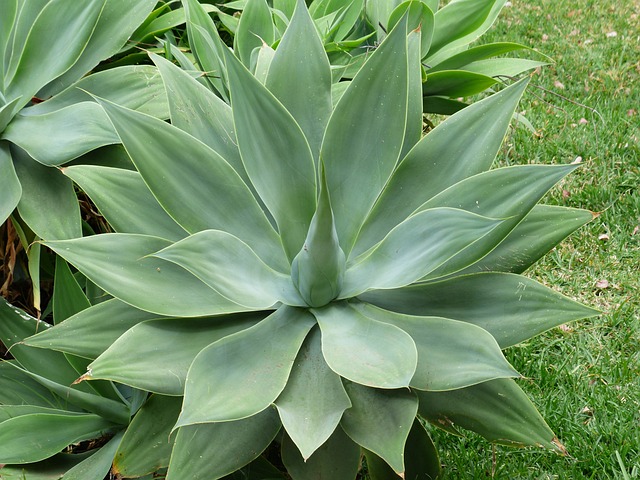
Groundcover Plants
- Opt for low-growing groundcover plants like creeping thyme and camomile to fill spaces and reduce maintenance.
- Purple Rock-cress is perfect for growing on rockeries and walls.
- Erigeron or “Mexican Fleabane” are tiny white to pink daisy like flowers that self seed and regrow every year. They bloom right through the summer and will grow on walls, rocks or steps in minimal soil.
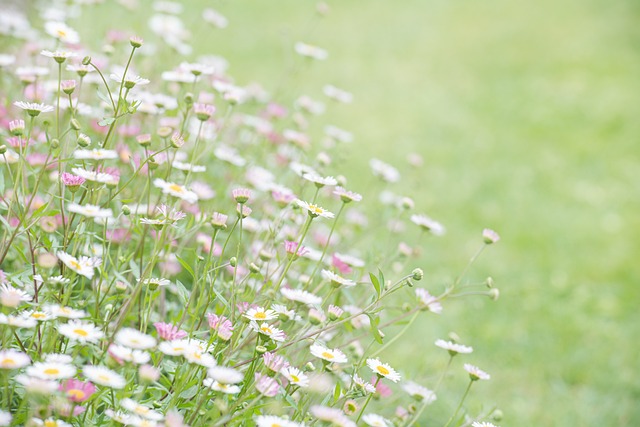
Vines and Climbers
- Use climbing plants like bougainvillea or wisteria, to cover walls, arbors, or trellises.
- You can even grow grapevines if you get a good amount of sun.
Step 4: Soil Preparation
Prepare the soil to ensure your Mediterranean plants thrive:
- Conduct a soil test to assess its pH and nutrient levels. Adjust the pH if needed to match your plant’s requirements.
- Mediterranean soil tends to be slightly acidic to medium alkaline and is on the dry side.
- Enhance your soil with organic matter such as compost or well-rotted manure to improve fertility and structure but be careful not to make the soil too heavy or compactable.
- Ensure that your garden beds have proper drainage to prevent waterlogged soil, which can harm Mediterranean plants.
- If your soil is heavy, work in some sand, grit or gravel to loosen it up.
- You can also add Perlite to aerate the soil and help with drainage.
- Make sure any pots or containers have good drainage holes.
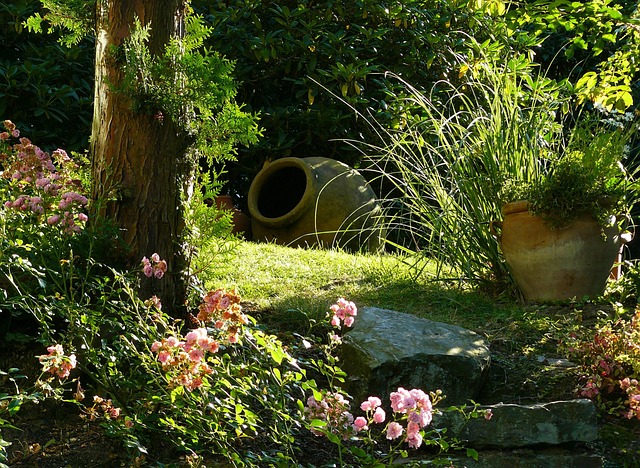
Step 5: Irrigation and Watering
- Though Mediterranean gardens are designed for drought tolerance, you must provide enough water during the establishment phase.
- Water new plantings consistently during their first year to help them develop deep root systems.
- Apply a layer of mulch around your plants to retain moisture, regulate soil temperature, and suppress weed growth.
- Regularly check soil moisture levels to adjust your watering schedule according to your garden’s needs.
Step 6: Encourage Wildlife
Mediterranean gardens often attract various forms of wildlife, enhancing their appeal. Here’s how to encourage wildlife in your garden:
- Hang bird feeders and have stone birdbaths to attract local bird species.
- Create rock gardens with crevices where lizards and insects can find shelter.
- Allow sections of your garden to grow wild with native wildflowers to attract pollinators.
- Include nectar-rich flowers like lavender, buddleia, salvia, and verbena to attract butterflies.
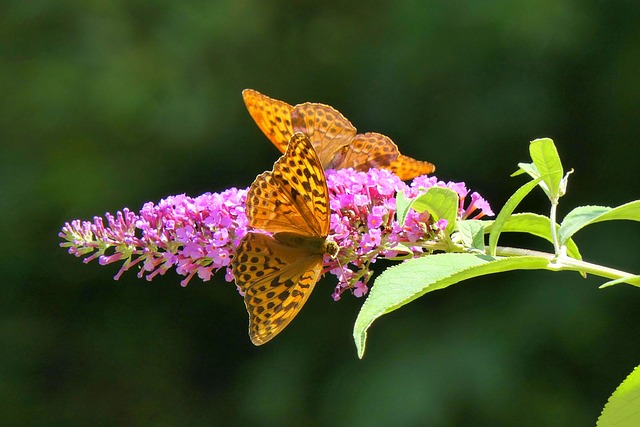
Step 7: Maintenance and Care
While Mediterranean gardens are fairly low maintenance, there are some jobs that will always need doing:
Pruning
- Trim and prune your plants as needed to maintain their shape and health.
- Herbs like rosemary, thyme and lavender can tend to grow woody and straggly if not trimmed regularly.
- Flowers can be dead-headed to encourage more blooms.
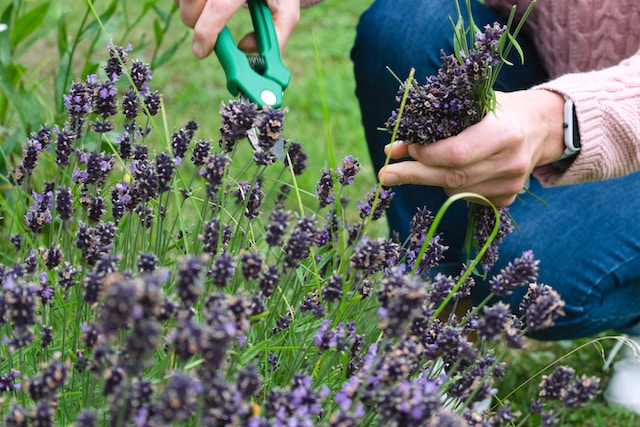
Fertilising
- The beauty of Mediterranean planting is that they will do well in poor soil and are unlikely to need extra fertiliser.
- If your plants look like they could do with a feed, apply compost or mulch around the base, being careful to leave a space between the compost and the stem.
- Do this in the spring and late autumn, and this should be sufficient.
Pest and Disease Management
- Like all gardens it is important to monitor your garden for pests and diseases and take prompt action should any infestations occur.
- If the plants receive good sunlight and do not become waterlogged, they should remain reasonably disease free.
Weed Control
- Keep an eye on your garden beds and regularly remove weeds to stop competition for nutrients and moisture.
Conclusion
Creating a Mediterranean garden allows you to enjoy the ambience of southern Europe, even if you’re miles away from the Mediterranean coast.
Implementing these simple design ideas either as a whole scheme, or even just in small sections of your garden can give you a beautiful and aromatic place to relax in.
Check out our other articles to learn how to create your own tropical garden, or Zen garden!
